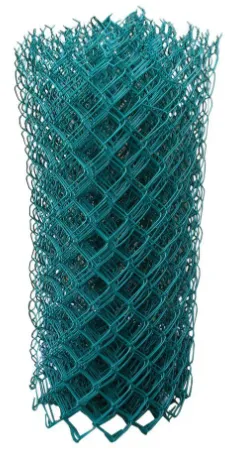Understanding Perforated Sheet Sizes A Comprehensive Guide
Perforated sheets are widely used in various industries due to their versatility, functionality, and aesthetic appeal. They are made from materials such as metal, plastic, and even fiberglass, and feature a series of holes that are uniformly distributed across the surface. This unique attribute makes perforated sheets ideal for applications like filtration, ventilation, sound control, and decorative purposes. When selecting perforated sheets for your projects, understanding the available sizes and their implications is crucial.
The Importance of Perforated Sheet Sizes
The size of a perforated sheet affects its overall performance in different applications. Factors such as hole size, pitch, pattern, and sheet size play significant roles in determining how well the sheet will function for its intended purpose. The dimensions of the perforated sheet must be compatible with the space available in a project and the specific requirements of the task at hand.
1. Hole Size and Pattern
The hole size in a perforated sheet directly influences airflow, light transmission, and liquid flow. It is essential to choose the correct hole size based on the application. For instance, larger holes may be needed for applications that require significant airflow, like ventilation systems, while smaller holes could be optimal for filtering applications.
Perforated sheets come in various hole patterns, including round, square, rectangular, and oval. Each pattern has its advantages, depending on the desired aesthetic and functional requirements. Round holes are often used for aesthetic reasons or where high-strength and rigidity are required, while square or rectangular holes may provide greater drainage.
2. Pitch and Percentage of Open Area
The pitch refers to the distance between the centers of two adjacent holes. A closer pitch results in a greater open area percentage, which can enhance the sheet's ability to allow air or liquids to pass through. The percentage of open area is a critical specification when considering filtration applications; a higher open area percentage indicates a higher capacity for volume flow.
3. Sheet Size
perforated sheet sizes

Perforated sheets come in various standard sizes but can also be customized to meet specific dimensions. The standard sheet sizes typically include 4x8 feet, 5x10 feet, and 3x10 feet, but custom dimensions can be manufactured based on client requirements. When selecting a size, it's important to consider the dimensions of the installation space, as well as any fabrication or handling equipment that will be utilized.
Material Considerations
The material of the perforated sheet also influences both size selection and application performance. Common materials include
- Steel Strong, durable, and commonly used in structural applications. - Aluminum Lightweight and resistant to corrosion, making it ideal for both indoor and outdoor uses. - Plastic Offers chemical resistance and is often used in environments where metal may corrode. - Brass and Copper Often used for decorative applications due to their appealing aesthetics.
Choosing the Right Perforated Sheet Size
When choosing a perforated sheet, consider the following steps
1. Define the Application Requirement Understand the specific needs of your project, including the desired air or water flow rate. 2. Determine the Material Based on where the sheet will be installed (indoors, outdoors, exposure to chemicals), select an appropriate material. 3. Select Hole Size and Pattern Choose the hole size and pattern based on functionality and aesthetic preferences. 4. Choose the Sheet Size Finally, determine the dimensions based on the installation area while keeping in mind custom options if standard sizes do not meet your requirements.
Conclusion
In conclusion, selecting the right perforated sheet size is essential for ensuring optimal performance in various applications. By understanding the interplay between hole size, pitch, open area percentage, and sheet dimensions, you can make more informed decisions that align with your project goals. Whether for industrial uses like filtration and ventilation, or for architectural elements that enhance aesthetic appeal, having the right perforated sheet is foundational to project success. Always consult with manufacturers or suppliers to get the most accurate information and assistance tailored to your specific needs.
-
Turn Down the Noise: The Future of Highway Sound Barriers
NewsApr.09,2025
-
Silence the Sound: The Power of Highway Noise Barriers
NewsApr.09,2025
-
Reduce Road Noise Effectively with Highway Noise Barriers
NewsApr.09,2025
-
Noise-Free Living: How Highway Barriers Make a Difference
NewsApr.09,2025
-
Engineered for Silence: Highway Noise Barriers for Every Road
NewsApr.09,2025
-
Effective Noise Control: Highway Barriers for a Quieter Tomorrow
NewsApr.09,2025
Subscribe now!
Stay up to date with the latest on Fry Steeland industry news.

